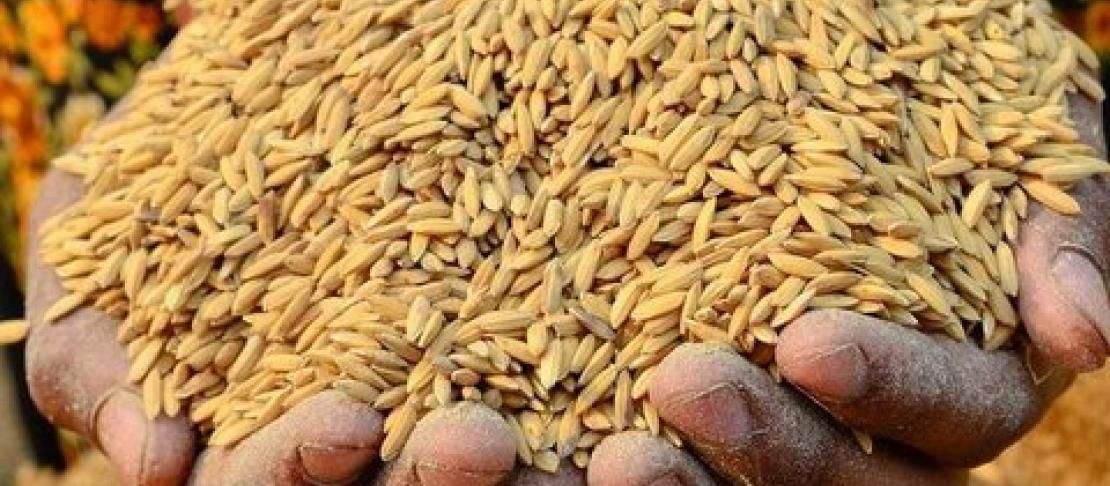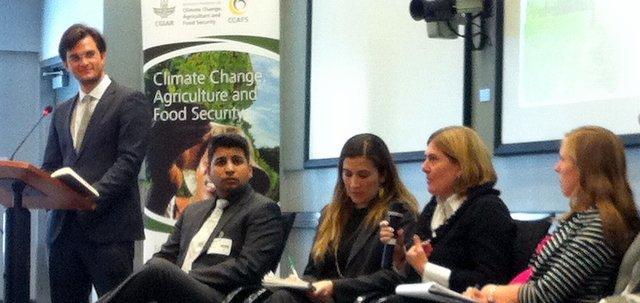Meeting global food needs with lower emissions: IPCC report findings on climate change mitigation in agriculture

Experts agreed that a number of high-impact options are already actionable at a meeting convened by the CGIAR Research Program on Climate Change, Agriculture and Food Security (CCAFS), Global Research Alliance on Agricultural Greenhouse Gases (GRA), and World Bank on 16 April in Washington, DC. (Please find links to the WGIII report here and all presentations and videos at the end of this blog.)
One set of options centers around producing food differently through adoption of conservation and climate-smart agriculture approaches that increase farmers’ productivity and adaptation to climate change, while also providing mitigation benefits. Examples include:
- Conserving existing carbon stocks (in forests, peatlands, wetlands, and soil) by avoiding carbon stock degradation and enhancing carbon sequestration in soils, biota and long-lived products
- Reducing CH4 or N2O emissions from livestock systems, for example through improved feed and forage, animal health, manure management and grazing management
- Avoiding N2O emissions through efficient use of nitrogen fertilizer in croplands
- Reducing CH4 and N2O emissions from irrigated rice, through water and nitrogen fertilizer management
These options are globally actionable and supportive of countries’ development priorities, but regional and national priorities vary. For example, while many countries are committing to an alternate wetting and drying system for irrigated rice production, fertilizer-related emissions is a priority in China.
The second set of options involves shifting food consumption patterns and decreasing waste. Changing to a healthy diet could reduce emissions potentially more than shifts in technical practices. Likewise, huge savings exist from decreasing waste, as a third of all food produced is lost in the supply chain from harvest to consumption.
The challenge now is to act on these priorities.
“Time is running out for agriculture to contribute to meeting global climate targets,” World Bank Director of Agriculture and Environmental Services Juergen Voegele said.

World Bank's tobias baedeker leads a discussion of low-emissions agriculture initiatives, with the goal of scaling up. Photo: J White (CCAFS)
Charlotte Streck from Climate Focus presented findings of a report sponsored by the Climate and Land Use Alliance identifying mitigation strategies for philanthropy, donors and other parties. The CLUA and IPCC reports agree on the numbers and conclusions on the technical mitigation potential, but the CLUA report also proposes concrete mitigation actions embedded in regional & national policy context.
Giovanna Valverde, Ministry of Agriculture and Livestock in Costa Rica, described how her country aims to meet its goal for carbon neutrality in 2021 by reducing emissions from livestock and coffee. Through an industry roundtable, new policies and scientific monitoring, she estimated that improved livestock practices on 80% of farms could produce co-benefits of about 11 million tons of CO2 and reduce about 1.2 million tons of CO2 emissions in 15 years.To enable rapid roll-out of low-emissions agriculture initatives at scale, leaders in the field are sharing how they work with farmers to lower emissions while increasing food security, and sharing lessons on how to implement activities at scale.
In Ghana, the Rainforest Alliance is facilitating a sustainable value chain approach to improved cocoa production and forest conservation in the Juabeso-Bia area. Jeff Hayward explained how training farmers, using lead farmers to demonstrate options and working with communities to develop adaptation plans has increased carbon sequestration and yields on 11,000 ha. Over 4000 farmers are leaving shade trees, pruning cocoa, using fertilizer efficiently, protecting sacred groves, planting trees and diversifying crops.
The Nature Conservancy is working with cattle in Brazil, where they reduced deforestation by 75% while also improving livelihoods on 32,000 properties (87% of the total) in ranchers in São Félix do Xingu Municipality. Erin Meyers Madeira said the game changer was increasing productivity from one to three heads of cattle per hectare and engaging the private sector through supply chain sustainability measures and extension services to achieve scale.

Improved livestock Management offers huge potential to avoid deforestation and increase farmers' income, especially in tropical forest areas, like this photo of the amazon river in Brazil. Photo: N Palmer (CIAT) View original
Successful scaling up requires a combination of consumer demand, supportive regulatory framework and governance, technical assistance and finance incentives, and engagement with stakeholders. Baskets of technical options that enable farmers to develop solutions for their needs and farm conditions are more important than silver bullet interventions. Working at jurisdictional or administrative scales encourages better integration with policies and avoids displacing impacts.
Need to measure and support scaling up with climate finance
Experts also reiterated the need for improved methods and better accounting of emissions. Harry Clark, Director of the New Zealand Agricultural Greenhouse Gas Research Center and another lead IPCC author, called for more precise county-level accounting (in IPCC lingo “Tier II”) to better reflect gains in the efficiencies of production systems related to GHG emissions. Using less precise Tier I numbers risks overestimating emissions. He noted that emissions intensities are declining where better genotypes, more efficient use of fertilizers and legumes or improved feeding and animal health are practiced.
Representatives from the Climate and Clean Air Coalition, Inter-American Development Bank and World Bank indicated that the donor and finance community are pro-active in leading investment in low-emissions agriculture. But the levels of funding are too small. As one participant asked, “where will the big funding come from?”
How we produce and consume food globally will make a difference in stabilizing the climate. Success will be incremental and look different in different places, but low emissions agriculture can – and must – be achieved at large scales.
The movement to reduce greenhouse gas emissions in agriculture is gathering momentum. We are posed to implement and scale up initiatives that will increase food security and adaptation while decreasing the amount of carbon released into our atmosphere. The time is now.
Please click on the links below to view the videos and powerpoint presentations from Meeting global food needs with lower emissions: IPCC report findings on climate change mitigation in agriculture or see the full playlist of videos here.
| Welcome | Juergen Voegele, World Bank | video | |
What the IPCC says | Chuck Rice, Kansas State University, IPCC author | ||
Opportunities and recommendations for mitigating climate change in agriculture: Results from a study commissioned by the Climate and Land Use Alliance | Charlotte Streck, Climate Focus | ||
Priorities for best practices and capacity building | Harry Clark, New Zealand Agricultural Greenhouse Gas Research Centre, GRA Livestock Research Group, IPCC author | ||
Costa Rica’s Zero Emissions Policy and agricultural NAMAs for coffee and livestock | Giovanna Valverde, Ministry of Agriculture and Livestock, Costa Rica | ||
Enhancing carbon in Ghana’s cocoa landscapes by increasing productivity and restoring ecosystems | Jeffrey Hayward, Rainforest Alliance | ||
Cattle and avoided deforestation in Brazil | Erin Myers Madeira, The Nature Conservancy | ||
Catalyzing mitigation through the Climate and Clean Air Coalition (CCAC) | Sunny Uppal, Environment Canada, CCAC | ||
Agriculture and future climate in LAC: Systemic impacts and potential responses | Ana Rios, Inter-American Development Bank | ||
Financial innovations for increased productivity and lower emissions from agriculture | Neeta Hooda, World Bank | ||
